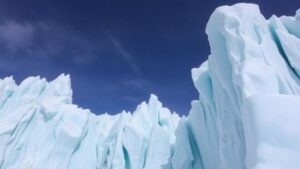Exploring high-altitude plateaus to find rare species of snow partridges.
Exploring High-Altitude Plateaus to Find Rare Species of Snow Partridges
The pursuit of rare species often leads researchers and wildlife enthusiasts to the remote, high-altitude plateaus where unique ecosystems thrive. Among the fascinating inhabitants of these regions are the elusive snow partridges (Lerwa lerwa), known for their remarkable adaptations to cold environments. This article explores the characteristics, habitat, and conservation challenges of these remarkable birds and shares insights into the efforts to locate and study them in their natural habitats.
Understanding Snow Partridges
Snow partridges are medium-sized birds that inhabit the rugged terrains of the Central and Eastern Himalayas. are primarily found in regions above 3,000 meters (9,843 feet) in altitude, where they have developed a range of adaptations to survive the harsh conditions.
- Physical Characteristics: Snow partridges have a stocky build, with a rounded body and thick plumage that provides insulation against extreme cold. Their coloration typically features shades of gray and white, allowing them to blend seamlessly into their snow-covered surroundings.
- Behavior: These birds are known for their strong territorial instincts. During the breeding season, males perform elaborate displays to attract females, showcasing their vibrant plumage and unique vocalizations.
Habitat and Distribution
Snow partridges are primarily found in high-altitude areas across several countries, including:
- India: They are found in the northern reaches, particularly in Ladakh and parts of Himachal Pradesh.
- Tibet: The Tibetan Plateau provides a vast expanse of habitat suitable for these birds.
- Nepal: The Himalayas in Nepal also host populations of snow partridges, particularly in the remote valleys.
These areas often boast rich biodiversity but also face environmental challenges due to climate change and human encroachment.
Conservation Challenges
Despite their resilience, snow partridges are classified as Near Threatened by the International Union for Conservation of Nature (IUCN). Several factors contribute to their declining populations:
- Habitat Loss: Deforestation and land conversion for agriculture significantly impact the availability of suitable habitats.
- Climate Change: Shifts in climate patterns affect the delicate ecosystems on which these birds depend, making food sources scarcer.
Also, increased tourism and hunting pose additional threats to their survival. Organizations like BirdLife International are actively working to develop strategies for conservation and public awareness.
Field Research on High-Altitude Plateaus
Field studies focused on the high-altitude habitats of snow partridges typically occur during the spring months, specifically from March to June, when breeding displays are most active. Researchers employ various methods to locate and observe these birds, such as:
- Camera Traps: These assist in non-invasive monitoring of bird populations and behavior.
- Direct Observation: Researchers often conduct early morning and late afternoon surveys to catch sight of these birds during their active hours.
For example, during a 2021 survey in Ladakh, ornithologists documented a small but healthy population, utilizing GPS tracking devices to monitor their movements and breeding patterns. This data is crucial in guiding conservation efforts and ensuring the long-term survival of the species.
Real-World Applications and Takeaways
Exploring the habitats of snow partridges not only aids in understanding a specific species but also highlights the broader ecological health of high-altitude environments. The continued study of these birds can lead to important conservation initiatives that benefit multiple species and ecosystems.
For birdwatchers and conservationists, visiting these high-altitude plateaus offers unique opportunities to witness these rare species while contributing to ongoing research efforts.
Actionable Takeaways:
- Participate in local conservation initiatives to help protect high-altitude ecosystems.
- Educate others about the importance of biodiversity and species preservation.
- Support organizations that conduct field research and conservation work in the Himalayas and similar regions.
To wrap up, the journey to discover rare species like the snow partridge in high-altitude plateaus is not just about the birds themselves; its a broader narrative about preserving our planets rich biodiversity for future generations.


